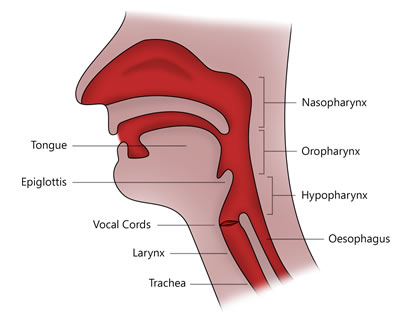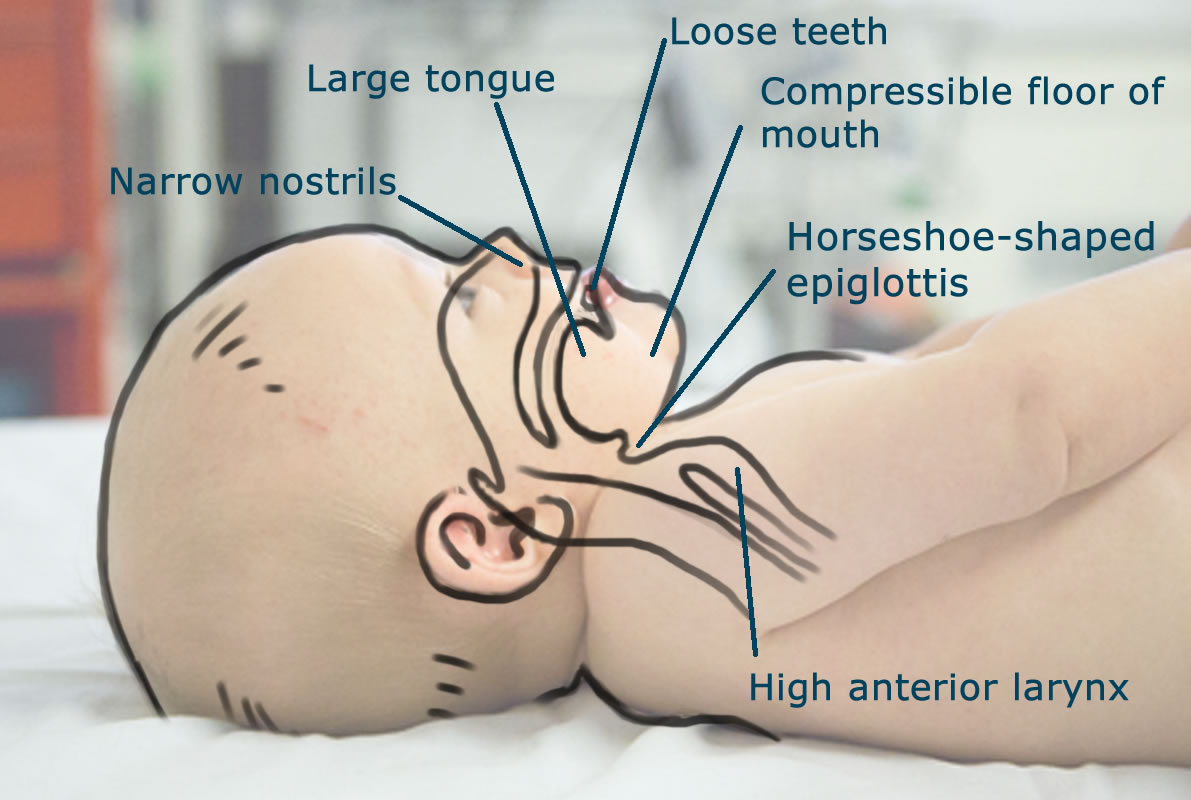

In the airways, airway resistance is inversely proportional to the airway radius to the power 4 (104), which means that a small reduction in airway radius in a child will have a much greater impact than the same reduction in an adult. In infants and young children the airways are smaller and much narrower than in adults. Therefore the airway resistance is correspondingly also greater in children. Children are therefore more severely affected by any conditions which compromise the size of the airway.
Differences in the anatomy of the neck, mouth and head also make management of the airway more difficult. In infants, the head is much larger in relation to the body. Infants have a large occiput and a short neck which together contribute to neck flexion when placed supine. If the child has a reduced level of consciousness this can lead to airway occlusion. In children the mouth is much smaller than in adults but with a proportionally larger tongue. Again this can lead to airway occlusion in a child with a decreased conscious level.
Infants are “obligate nasal breathers” until around 6 months of age. This therefore means that anything causing obstruction of their nasal passages could result in airway compromise. This commonly occurs in upper respiratory infections where a large amount of mucous is produced (bronchiolitis) and also in babies born with narrowed nasal passages (choanal stenosis/atresia).
In babies the larynx is situated higher and more anteriorly than in the older child/adult and the cricoid cartilage is the narrowest point of the upper airway. The epiglottis is relatively large compared to adults and projects posteriorly. These changes make babies more difficult to intubate and due to the fact that the narrowest point of the airway is at the cricoid cartilage. Infants under 6 months will usually be intubated with an un-cuffed endotracheal tube. Over 6 months of age a cuffed tube is preferentially used as it prevents multiple intubations and prevents leak in cases such as croup (when the airway inflammation changes).